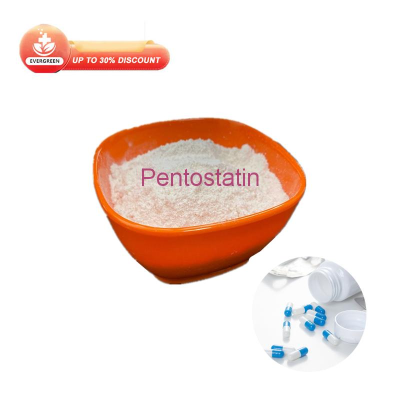-
Categories
-
Pharmaceutical Intermediates
-
Active Pharmaceutical Ingredients
-
Food Additives
- Industrial Coatings
- Agrochemicals
- Dyes and Pigments
- Surfactant
- Flavors and Fragrances
- Chemical Reagents
- Catalyst and Auxiliary
- Natural Products
- Inorganic Chemistry
-
Organic Chemistry
-
Biochemical Engineering
- Analytical Chemistry
- Cosmetic Ingredient
-
Pharmaceutical Intermediates
Promotion
ECHEMI Mall
Wholesale
Weekly Price
Exhibition
News
-
Trade Service
Immune escape is one of the key causes of tumorigenesis and progression, helping tumor cells evade lethal attack from immune cells
Immune escape is one of the key causes of tumorigenesis and progression, it helps tumor cells evade lethal attack from immune cells fatal attack
Immune checkpoint blockade (ICB) targeting the PD-1/PD-L1 pathway can modulate the tumor microenvironment and restore cytotoxic T lymphocyte (CTL) function, a discovery that has changed the cancer treatment landscape and has implications for a variety of cancers.
However, due to insufficient T cell infiltration in solid tumor tissues, PD-1/PD-L1 immune checkpoint blockade therapy has an insufficient response rate and is only effective in approximately 20% of cancer patients
On April 20, 2022, Zhang Chuan's research team from the School of Chemistry and Chemical Engineering, Shanghai Jiao Tong University, together with Li Yuehua from the Sixth People's Hospital Affiliated to Shanghai Jiao Tong University, and the Yu Naval Research Team from the Shanghai Institute of Materia Medica, Chinese Academy of Sciences, published a paper entitled: Copackaging photosensitizer and PD-Research paper on L1 siRNA in a nucleicacid nanogel for synergistic cancer photoimmunotherapy
Science Advances Science Advances Copackaging photosensitizer and PD-L1 siRNA in a nucleicacid nanogel for synergistic cancer photoimmunotherapyCopackaging photosensitizer and PD-L1 siRNA in a nucleicacid nanogel for synergistic cancer photoimmunotherapy
The research developed a nanogel that can simultaneously load PD-L1 siRNA and photosensitizer PPA, which can play a two-pronged approach to produce stronger photodynamic therapy effect, kill tumor cells, and at the same time significantly induce tumor cell immunity Primary death, inhibition of tumor metastasis
Zhang Chuan of Shanghai Jiaotong University, Li Yuehua of the Sixth People's Hospital Affiliated to Shanghai Jiaotong University, and researcher Yu Haijun of Shanghai Institute of Materia Medica, Chinese Academy of Sciences are the co-corresponding authors of the paper
Dr.
Zhang Chuan graduated from Tsinghua University with a bachelor's degree and a master's degree.
In 2014, Zhang Chuan returned to China to join the School of Chemistry and Chemical Engineering of Shanghai Jiao Tong University and established his own laboratory
Dr.
Dr.
Immune Checkpoint Blockade Therapy (ICB) is an Effective Approach to Current Cancer Treatment Immune Checkpoint Blockade Therapy (ICB) is an Effective Approach to Current Cancer Treatment
Theoretically, photodynamic therapy (PDT) can be well combined with immune checkpoint blockade therapy (ICB) to synergistically exert anti-tumor effects
Photodynamic therapy (PDT) can be well combined with immune checkpoint blockade therapy (ICB) to synergistically exert anti-tumor effects
Dr.
The hydrophobic nature of photosensitizers, limited laser penetration, and hypoxia and immunosuppressive tumor microenvironment often hinder the therapeutic efficacy of photodynamic therapy (PDT)
To overcome these problems, direct knockdown of PD-1/PD-L1 expression using small interfering RNA (siRNA) is an effective alternative to enhance T cell-mediated tumor killing
Direct knockdown of PD-1/PD-L1 expression using small interfering RNA (siRNA) is an effective alternative to enhance T cell-mediated tumor killing .
In recent years, DNA has received increasing attention as a novel non-cationic carrier, and DNA nanostructures can be used for drug delivery due to its good biocompatibility
In order to solve this problem, Zhang Chuan's team proposed a self-assembled nucleic acid nanogel platform for efficient delivery of functional nucleic acids (such as siRNA, miRNA, Cas9/sgRNA complexes, etc.
) Gel-assembled crosslinkers and embedded in three-dimensional structures
.
In this latest study, Zhang Chuan's team designed a PD-L1 siRNA cross-linker on the basis of the previous study, and the pheophytin A (PPA) photosensitizer was grafted to the DNA of the pre-designed phosphorothioate modification site.
On the backbone, the four PPA-grafted DNA thus synthesized can be assembled into a tetrahedral framework
.
Further binding to PD-L1 siRNA linker through supramolecular self-assembly forms a nanogel co-loaded with siRNA and PPA
.
In this nanogel system, hydrophilic DNA facilitates the uniform solubilization of PPA
.
Therefore, the nanogels containing photosensitizers exhibited excellent water solubility, which promoted the generation of reactive oxygen species and caused significant tumor cell immunogenic cell death
.
Meanwhile, the siRNA released from the nanogels also down-regulated the expression of PD-L1 in tumor cells, thereby synergistically promoting cytotoxic T lymphocyte (CTL)-mediated tumor killing
.
This results in strong inhibition of primary and distant tumors
.
Overall, this study developed a non-cationic nanocarrier platform for simultaneous delivery of immune checkpoint blockade therapy and photodynamic therapy with favorable biosafety, excellent photodynamic efficiency, promotion of immune responses, and effective tumor Inhibition and anti-metastatic efficiency, paving the way for the development of novel combination anti-tumor therapies
.
Dr.
Zhang Chuan said that in addition to the use of this nucleic acid nanogel for cancer treatment, the team mainly considers some indications that can be locally administered, and it can be made into a macro-gel injectable form, and relevant research and exploration are currently underway.
work
.
Dr.
Zhang Chuan also said that from the current experimental results, the in vivo pharmacokinetic properties of the nanogels are not ideal, and the circulation time is short
.
In addition, the endosome escape ability of spherical nucleic acid (SNA) itself is usually not very good, which affects the therapeutic effect of the loaded functional nucleic acid
.
In this study, light is used to promote nanogels to achieve endosomal escape.
In the future, further exploration and improvement are needed in the above two aspects to further enhance the therapeutic effect
.
leave a message here







